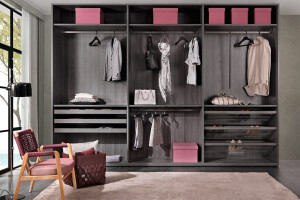PRATONE (1971) by Ceretti, Derossi & Rosso - ICONICAL COLLECTION
Pratone represents a desecrating design idea which is light years away from the usual typologies of bourgeois interior design of the Seventies; a gigantic portion of a meadow, designed for single and collective rest, which amazes for its precariousness. A unique and unconventional Chaise longue that has as yet found no ersatz, Pratone has become a reference parameter in the history of design in 1972, when it was chosen for the cover of the catalogue of the exhibit Italy: The New Domestic Landscape, organized by MoMA in New York.
It is an object "outside the box" which maintains its artisanal soul: as a matter of fact, each of the 42 long and soft blades of grassyou can sink into is worked and finished by hand, just like the label Pratone, engraved on the base of each module. It is for these characteristics that Pratone needs 5 weeks of work to get to the end product.
Its bright green and the softness of its blades of grass are achieved through painting with Guflac, the special and unique paint patented by Gufram that makes it possible to make polyurethane look like leather while maintaining its flexibility and softness.
Included by Vitra Design Museum among the 100 masterpieces of the history of Design, Pratone was on display in some of the most important museums of the world – like MUDE in Lisbon and the Musée des Beaux Arts in Montreal – and it is celebrated even today as a symbol of anti-design's cultural revolution, a veritable icon that has freed the user from the conditioning of his usual behaviour.
On the occasion of its 50th birthday, Gufram presented the Nordic Pratone version, which is entirely white: a portion of frozen meadow that laughs at the influence of Scandinavian design and the cultural homologation of design inspirations.
ABSTRACT
A unique and unconventional Chaise longue that has as yet found no ersatz, Pratone has become a reference parameter in the history of design. Included by Vitra Design Museum among the 100 masterpieces of the history of Design, it is an object "outside the box" which maintains its artisanal soul: as a matter of fact, each of the 42 long and soft blades of grass you can sink into is worked and finished by hand, just like the label Pratone, engraved on the base of each module. Its bright green and the softness of its blades of grass are achieved through painting with Guflac, the special and unique paint patented by Gufram that makes it possible to make polyurethane look like leather while maintaining its flexibility and softness.
TECHNICAL INFO
Seat in soft polyurethane finished by hand with Guflac®.
140x140x95 cm , ~61 kg | 55,2x55,2x37,5 in, ~135 lb
DID YOU KNOW
1. Designed in 1966 as an ironic reinterpretation of the traditional sitting room settees.
2. It is a unique type of seat that has as yet found no ersatz.
3. It is entirely assembled and finished by hand.
4. It is made of 42 soft blades of grass.
5. To make one Pratone 5 weeks are necessary.
6. To preserve its authenticity, the label “Pratone” is still engraved by hand.
7. It is on the cover of the catalogue of the epic exhibit Italy: The New Domestic Landscape at MoMA in New York in 1972.
8. It was on display in some of the most important museums of the world like the Museum of Contemporary Art in Chicago.
9. On the occasion of Gufram's 50th birthday Pratone froze, and so Nordic Pratone was born in a total white version.
Read in Italiano














